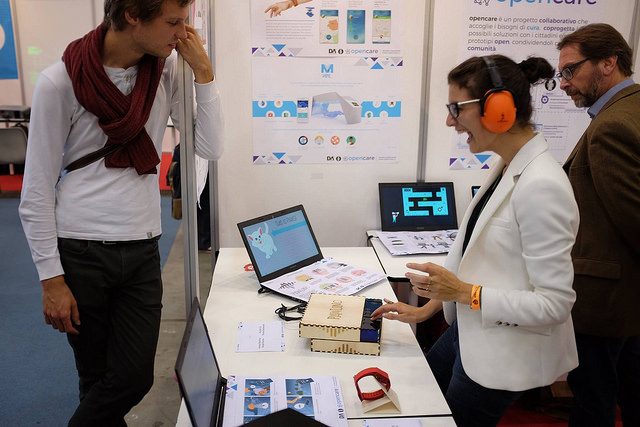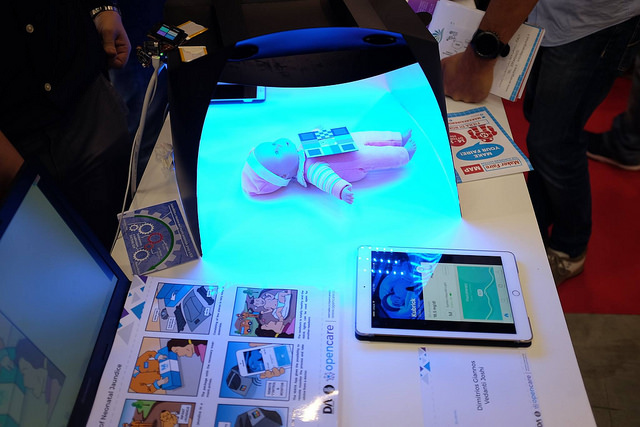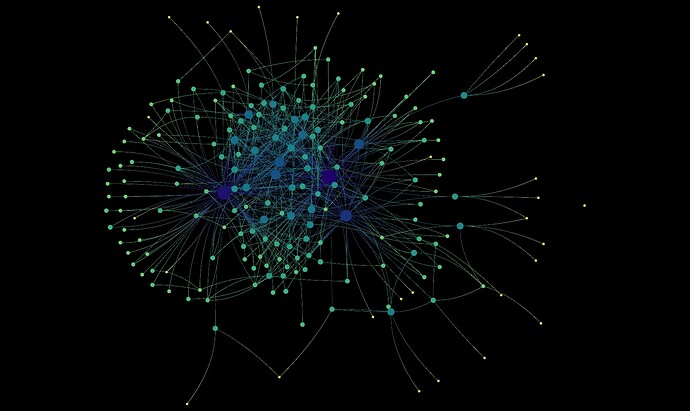Greetings all,
Here is a final about around the earlier shared story of Wemake joinig forces with Domus Academy to develop stories and products for Opencare. The end of the Rome Makerfaire marked the closure of the workshop lead by WeMake, in order to help interaction design students of Domus Academy start projects ideas and prototypes for Opencare.
The students have been documenting their projects on Edgeryders during the workshop. As the process developed, the students were researching ideas that either touch a personal story that they are part of, or a public cause that they contribute to or care about. The initial project proposals varied between interesting, feasible (or wonderful to have if technology supports it in 50 years ;), and very helpful. The common theme was that students managed to grasp the concept of opencare, and what does it mean to develop projects under the notion of care. Below is a sample of students suggestions which they already documented on Edgeryders (but not everyone mentioned their releavance to Domus workshop ;):
Group waves, was interested in a future technology that can help create a bubble space for sound treatement between mothers and their kids, they were also excited about creating a new solution for active socializing between people with hearing/speaking disabilities, they also had ideas around creating smart stick for visiually impaired, a tool to help autistic kids coope with the surrounding, a device to help indoor noice cancelling, and a device that helps Parkinson patients track their tremors, https://edgeryders.eu/en/helping-someone-with-parkinsons-part-1all this before they finally decided to develop a bracelet for Alzhiemer patients :), where it helps track their movemet when they tend to walk away on their own.
Group Remit, who finally decide to develop a DIY affordable solution for newly born kids with Jaundice, in research phase they were earlier excited about leaping forward with technology to help figure sight changes instantly and on the spot
they were also excited about researching stress management techniques in public places.
The workshop started on Sept 19 and lasted for 4 weeks, where the last week, was a non-stop production mode at WeMake, while focusing on fabrication. On the last day, projects were packed shipped, and move along with Wemake projects to Rome.
Four projects were displayed at WeMake booth in Rome: Nooni (a bracelet for helping Alzhiemar patients and their caregivers), Pawlino (a piano that works via vibration sensors for kids with hearing disabilities), Juvo (a device that creates a game environment for exercise routine of Parkinson patients), and Maya (a DIY lost cost solutions for kids with jaundice).
This was the first time for any of the 16 students at any makerfaire event. It was a unique experience for both the students and opencare, to have an exposure in the makers world. Some students already got offers for crowd funding, and many visitors where interested in using the actual product after implementation. The workshop is over, but the projects probably are not --we will keep you posted on future prospected progress.






